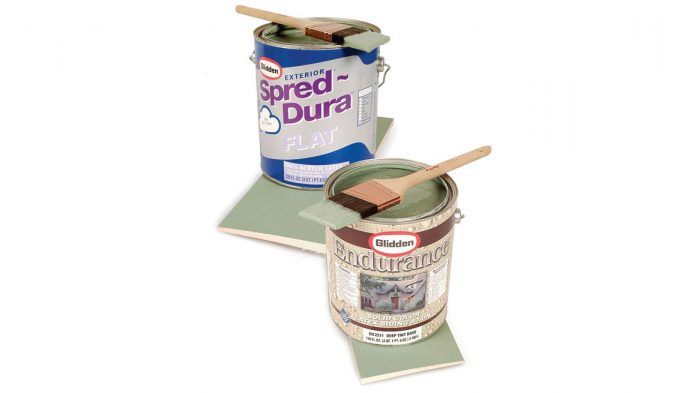What’s the Difference: Exterior Paint vs. Solid-Body Stains
While they both protect wood from the elements, there are significant differences between the latex paints and stains made for siding, fences, and other outdoor surfaces.

Latex paint vs. solid stain
When it comes to finishing exterior-wood surfaces, both latex paint and latex solid stains are potential choices. Both are available in basically the same colors and protect wood from sunlight and water. But according to manufacturers, there are a couple of differences.
Paint
- Forms a film that when dry is 0.002 in. to 0.003 in. thick.
- Most paint should be applied over a primer, not over bare wood.
- Contains a higher percentage of solids than stains.
- Fills wood pores more effectively than stain and obscures wood grain.
- Surface film can peel.
- Costs roughly 25% more than a stain of comparable quality, and may last several times longer than stain before it needs recoating.
Solid Stain
- Won’t peel like paint because it doesn’t form a film.
- Does not completely hide the grain and texture of wood.
- Will have to be recoated more often than paint, in as little as two or three years on areas with intense weather exposure. May wear off horizontal surfaces with heavy foot traffic even sooner.
- Formulated with fewer solids than paint.
- Soaks into wood surface more readily.
- Does not require a primer.
- Should not be recoated if the surface still repels water.





